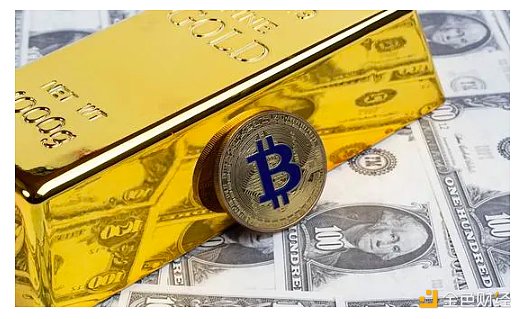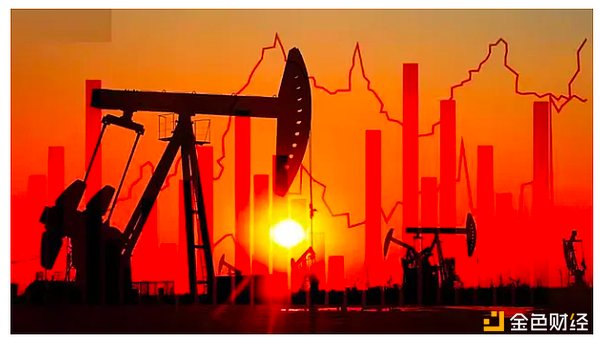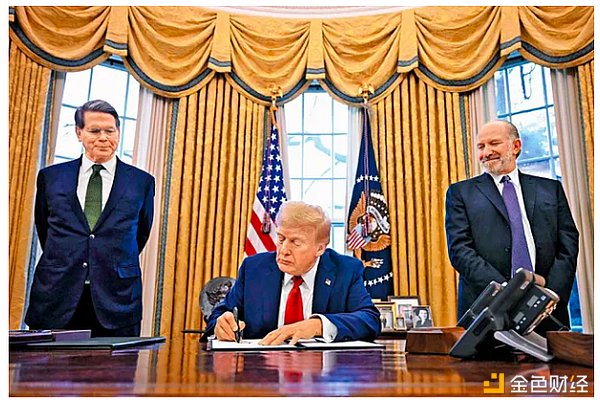Previous article: Strategic Reserves and Power Games I - The Crypto Order in the Trump Era
Author: Zeke, Researcher at YBB Capital
Foreword
On March 6, US President Trump signed an executive order formally establishing the US Bitcoin Strategic Reserve. David Sachs, the White House's cryptocurrency affairs supervisor, further clarified the reserve details on the social media platform X: the federal government will include about 200,000 Bitcoins it has seized through criminal or civil forfeiture proceedings in this strategic reserve. It is explicitly stated that "they will not be sold or purchased through the market".
In my article published on March 5, I speculated on some of the progress of the strategic reserve. Interestingly, the current situation is very much in line with my predictions at the time. Trump did not, as he had previously promised, include Altcoins such as SOL or XRP in the reserve list, nor did he inject new fiscal funds into the BTC reserve, but simply allocated the seized Bitcoins to the strategic reserve. However, what is surprising is the speed at which the reserve was implemented - Trump did not delay long before playing this "trump card". With the launch of this move, the market's fantasy of government bulk purchases has gradually faded, and BTC has also fallen back to around $77,000. Now, no matter how you look at it, Trump's remaining strategic choices seem to be dwindling. But what is worth pondering is: Is this really the limit of this "crypto president" who has dominated the business and political circles for decades?
I. From Gold, Oil, to BTC?
The collapse of the Bretton Woods system, the cracks in the petrodollar, and the rise of Bitcoin all represent the constant evolution of the US dollar anchor.
The establishment of the Bretton Woods system in 1944 marked the US dollar becoming the "ultimate anchor" of the global monetary system by pegging it to gold ($35 per ounce). The core logic of this system was that the physical scarcity of gold supported the credit of the US dollar, and the network effect of the US dollar amplified the liquidity of gold. However, the Triffin dilemma exposed the fatal flaw of this system - global trade expansion requires the outflow of US dollars (US deficits), while maintaining the credit of the US dollar depends on US surpluses and adequate gold reserves. In 1971, Nixon announced the decoupling of the US dollar from gold, freeing the US dollar from the constraints of gold, and maintaining US dollar hegemony. This proves that any monetary system rigidly pegged to physical resources will ultimately collapse due to the irreconcilable conflict between resource scarcity and economic expansion. The end of the gold standard forced the US to seek a more flexible anchor.
The first oil crisis in 1973 gave Nixon the answer: the importance of oil to modern industry is undeniable. The following year, US Treasury Secretary William Simon and his deputy Gerry Parsky were dispatched to Saudi Arabia to sign the "irrevocable agreement". The US promised to provide military protection and security guarantees to Saudi Arabia in exchange for Saudi Arabia agreeing to price all oil exports in US dollars and use the surplus oil revenue to purchase US Treasuries. The Petrodollar era was thus ushered in, with oil replacing gold as the new anchor of US dollar credit. The Petrodollar system operates in a closed loop of "oil trade - dollar recycling - US debt purchase". Wall Street has packaged these Petrodollar debts into derivatives (reaching a scale of $610 trillion in 2023), diluting credit risk through "debt monetization".
The essence of this circular logic is that the US collects a "seigniorage" from the rest of the world through oil trade. But now, with the US fiscal deficit remaining high (7% of GDP per year), and the national debt exceeding $36 trillion this year, this system has become a Ponzi scheme of borrowing to pay off debt. As the de-dollarization of oil trade gradually expands, this cycle will inevitably collapse. What will happen next? Who will fill the void left by oil?
Trump currently holds two powerful cards - Nvidia and Bitcoin. In the narrative of AI, Nvidia plays the role of the "digital Middle East", where everyone needs computing power, but only I can produce it. Unfortunately, a certain Eastern country has already taken a "small but beautiful" approach to AI computing power, so computing power and digital oil are not synonymous before the complete arrival of the AI agent era (or some countries may be self-sufficient in oil).
Let's look at the second card: Bitcoin. The idea of Bitcoin as a strategic reserve comes from a proposal made by Senator Lummis to Congress last year, who believes that the purchasing power of the US dollar has been declining, while Bitcoin's annual growth rate is as high as 55%, making it an excellent tool to hedge against inflation and a new type of value storage medium to replace gold. Trump even said, "Give them a little crypto check, give them some Bitcoin, and then we'll wipe out our $35 trillion."
Whether it's pegging the US dollar to Bitcoin or using it to pay off US debt, I have always been opposed to these ideas. The first reason is the one mentioned above - the collapse of the Bretton Woods system. The hard cap of Bitcoin is 21 million, much scarcer than gold, and the US cannot repeat the Triffin dilemma. Secondly, the volatility is too high, and the current reserve of 200,000 Bitcoins is only worth less than $20 billion, which is only 0.056% of US debt. To achieve an effective peg, the US would need to hold at least 30% of the circulating Bitcoin (about 6 million), or significantly increase the value of Bitcoin and stabilize its price - both of which seem unrealistic. Thirdly, pegging the US dollar to Bitcoin will only accelerate the marginalization of the US dollar. How to convert Bitcoin into a global tax base is another unresolved issue.
Looking at the current implementation of the strategic reserve, the Trump administration obviously cannot find a better entry point in the short term. But the speed at which this card was played forces me to rethink: Do they have an even bigger trump card?
My personal thoughts, extending the speculation from the previous article:
1. The scarcity of Bitcoin does not mean that all cryptocurrencies are scarce, as the design of most public chain tokens is deflationary. The US dollar is currently supported by oil and pegged to gold. The structure of the digital Fort Knox may be a hybrid: BTC is gold, and tokens like ETH or SOL are oil. As "crypto cities" are widely applied, can a US-style crypto closed loop be formed? For example, projects like Usual and Tether, various stablecoin projects, are constantly promoting the so-called US dollar settlement, and their structural mechanisms or profit sources are closely related to US debt, which may have some similarities to the Petrodollar system?
2. At this stage, not buying or selling is reasonable, but if the final action is limited to this, then the announcement of this news was premature. Trump is not stupid, and his crypto team is not stupid either. There are more and more rumors in the industry that the US sovereign wealth fund (still in the planning stage) will purchase cryptocurrencies. I tend to believe that this sovereign wealth fund is likely to be his trump card.
3. Initially, I thought Trump was just making hollow promises to the crypto industry for the benefit of its underlying network. However, considering the current situation, we may need to have a more ambitious goal. It is only a matter of time before mainstream countries emulate the strategic reserve. Personally, I think BTC is the most acceptable, but the position of SOL or even XRP may surpass ETH (as adoption progresses).
4. The largest unit in the crypto war is no longer the public chain. Trump seems to be integrating the largest CEX, public chains, and various giant projects, but it is still unclear how he will integrate them, and how those who resist will counterattack.
5. Wall Street rumors that Trump is planning a self-destructive recession to force the Federal Reserve to lower interest rates. Whenever the market looks set to improve, Trump and Musk (DOGE) strike hard. So, is Trump also trying to suppress the crypto market? Turn the highest expectations into a bubble? However, I don't quite agree with this. First, the AI bubble in the US stock market is undeniable - although it cannot be compared to the Internet bubble of 2000, the overheating is certain. Secondly, Trump and Musk's tough measures will inevitably trigger a backlash, and the counterattack of the left is inevitable. The so-called "recession" is actually the result of the joint efforts of both sides.
Regarding points 1, 3 and 5, I can only speculate at this stage, but for points 2 and 4, I believe I can expand further.
II. Sovereign Wealth Fund
On February 3 this year, Trump signed an executive order requiring the establishment of a US sovereign wealth fund next year, and requiring the US Department of Commerce and the Treasury Department to submit a plan within 90 days, including financing mechanisms, investment strategies, financial structures and governance models, with the aim of financing infrastructure, supply chains and strategic industries.
About 50 countries and regions have set up sovereign wealth funds globally, with China's CIC and SAFE ranking second and third in the world. The investment style of sovereign funds varies by country, with the Middle East focusing on strategic industries, Norway focusing on stock investments, and China serving private equity, real estate and the Belt and Road Initiative. The benefits of establishing a sovereign wealth fund are four-fold: 1. Smoothing economic fluctuations (hedging commodity price risks, optimizing foreign exchange reserve management); 2. Promoting economic structural transformation (such as the Middle East's support for tourism and technology); 3. Gaining global financial influence; 4. Protecting society and building social welfare.
The establishment of the US sovereign wealth fund is mainly driven by the TikTok dispute. Publicly, it is Trump's acquisition of an internet company beloved by the American people, while also solving the fiscal deficit and infrastructure upgrade issues. Privately, it is Trump using his business acumen in the White House to upgrade his power. If conditions permit, this fund could become a major source of funding for crypto strategic reserves. This is not entirely speculation, as the key person in charge of the fund, the nominee for US Secretary of Commerce, Lutnik, was once the CEO of Cantor Fitzgerald, one of Tether's custodians, and has managed related assets. In addition, Lutnik is a supporter of Bitcoin, so it is not surprising that he will be in charge of the planning of the sovereign wealth fund - this seems to have paved the way for Trump's crypto family and the interests behind it. In addition, most sovereign funds are registered in offshore financial centers such as the Cayman Islands or Luxembourg, using local laws to avoid disclosure requirements, thereby achieving behind-the-scenes operations. For example, Saudi Arabia's Public Investment Fund (PIF) holds 320,000 BTC through offshore shell companies, completely outside the supervision of the sovereign asset balance sheet. Trump's regret during his 2016 term may be fully resolved during this term.
As for the source of funds, there are only four options: earn, sell, borrow, or print. Looking at the current situation in the US, the first two options are the most likely. Trump hopes to use tariff revenue to fill the fund, or to fill it by selling the $5.7 trillion in assets currently held by the federal government. Of course, the way the fund is established is not important, what is important is the potential scale of the ideal fund. If this becomes a reality, the key points are: 1. Government purchases will become a fact; 2. Crypto projects centered on the US will become the primary (and possibly the only) Alpha in the crypto world; 3. Whether top projects accept investment from the sovereign fund will determine their survival.
III. Surrender?
This month, Binance has taken two major actions. First, it partnered with the UAE royal family and received a $2 billion investment from the sovereign wealth fund MGX. There are rumors that Binance has also discussed investment with US officials. The Wall Street Journal even claimed that CZ may have traded equity for a pardon of the Trump family. Secondly, the Binance Smart Chain (BSC) has been seamlessly integrated into its own CEX, meaning that CEX users can now easily participate in on-chain transactions on BSC using stablecoins. These measures highlight the systemic integration of traditional finance and geopolitical forces in the crypto field. In addition, embracing centralization seems to be the only way out for public chains. Crypto is being divided by various countries, public chains must either embrace the elite or embed in CEX, their growth and strength depend on the allocation of traffic.
Ethereum, which has chosen to remain independent, continues to maintain its proud posture, even as its exchange rate with BTC continues to hit new lows. The crypto community's suspicion of the Ethereum Foundation and Vitalik has been ongoing for nearly a year. However, from my perspective, the survival of Ethereum - and its potential counterattack - is crucial to the crypto world. Today, there are only two paths: surrender or resistance.
The surrenderers will share the rewards with the elite and enjoy temporary peace. But if five cities are ceded today, ten cities tomorrow, what will happen in the future? A constantly advancing centralized Web3 will no longer be Web3. Ultimately, the Seven Nations will be unified by the Qin State. Ethereum may have a strange dictator, but it is still the only public chain that deserves to be called a decentralized ecosystem. Yes, even today. I am not a staunch supporter of Ethereum, but I do not want to see it become the Handan City of the crypto world.
Ideally, value should exist in the code running on the blockchain, not in a line of signature on a White House executive order.











